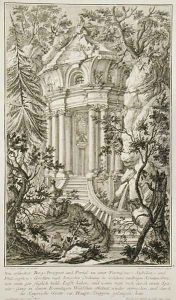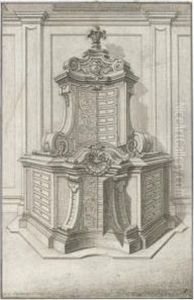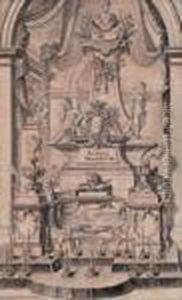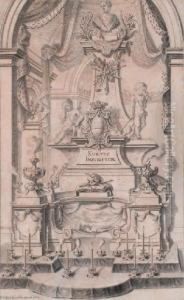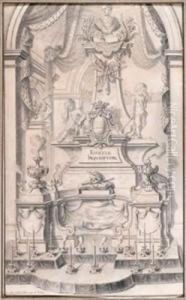Schubler, Johann Jacob Paintings
Johann Jacob Schübler was a German architect, mathematician, engraver, and publisher born in 1689 in Nuremberg. He is best known for his work in architectural treatises, which were influential in disseminating Baroque architectural ideas and designs throughout the German-speaking world during the first half of the 18th century.
Schübler showed an early aptitude for mathematics and geometry, which provided a solid foundation for his later architectural studies. He worked not only as an architect but also as an engraver, illustrating his own designs and those of others. This dual talent allowed him to produce a number of important architectural books, which included detailed engravings and plans, providing a valuable resource for other architects and craftsmen of the period.
One of Schübler's most significant contributions to the field of architecture was his collection of works known as 'Zwey Bücher von der Perspectiva', which delved into the theory and application of perspective in drawing. Additionally, he produced 'Fürstliche Baumeister', a treatise on civic architecture, and 'Guldene Aepffel in Silbern Schalen', which contained designs for secular buildings, fountains, and garden pavilions.
Despite his influence in architectural literature, little is known about Schübler's actual constructed projects, and his legacy rests primarily in his published works. These publications were widely circulated and used as practical guides for the construction of a variety of structures, from residential buildings to more elaborate garden layouts and ornaments.
Johann Jacob Schübler passed away in 1741. His death marked the end of an era in which his books had served to spread the Baroque style across Germany and beyond. While he may not have left behind a large body of built work, his influence on architectural education and practice during his lifetime was significant.
